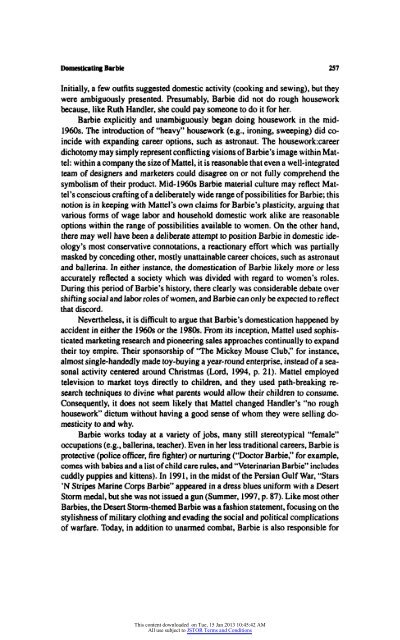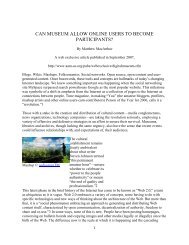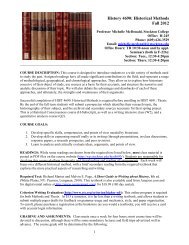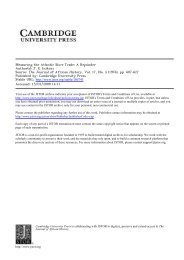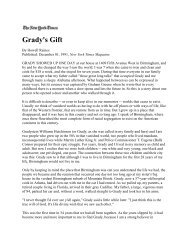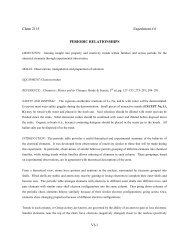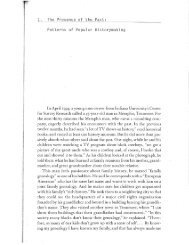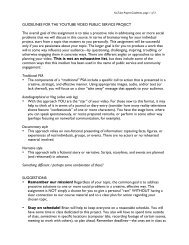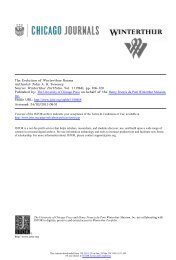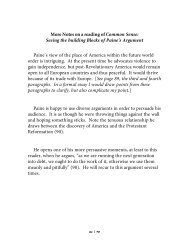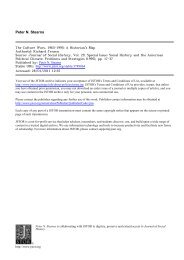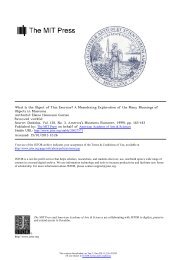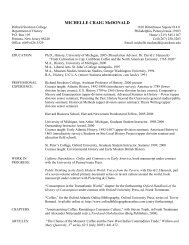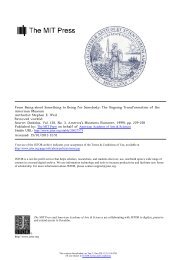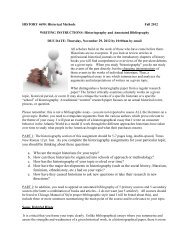Domesticating Barbie - Richard Stockton College Word Press ...
Domesticating Barbie - Richard Stockton College Word Press ...
Domesticating Barbie - Richard Stockton College Word Press ...
You also want an ePaper? Increase the reach of your titles
YUMPU automatically turns print PDFs into web optimized ePapers that Google loves.
<strong>Domesticating</strong> <strong>Barbie</strong> 257<br />
Initially, a few outfits suggested domestic activity (cooking and sewing), but they<br />
were ambiguously presented. Presumably, <strong>Barbie</strong> did not do rough housework<br />
because, like Ruth Handler, she could pay someone to do it for her.<br />
<strong>Barbie</strong> explicitly and unambiguously began doing housework in the mid<br />
1960s. The introduction of "heavy" housework (e.g., ironing, sweeping) did co<br />
incide with expanding career options, such as astronaut. The houseworkxareer<br />
dichotomy may simply represent conflicting visions of <strong>Barbie</strong>'s image within Mat<br />
tel: within a company the size of Mattel, it is reasonable that even a<br />
well-integrated<br />
team of designers and marketers could disagree on or not fully comprehend the<br />
symbolism of their product. Mid-1960s <strong>Barbie</strong> material culture may reflect Mat<br />
tel's conscious crafting of a deliberately wide range of possibilities for <strong>Barbie</strong>; this<br />
notion is in keeping with Mattel's own claims for <strong>Barbie</strong>'s plasticity, arguing that<br />
various forms of wage labor and household domestic work alike are reasonable<br />
options within the range of possibilities available to women. On the other hand,<br />
there may well have been a deliberate attempt to position <strong>Barbie</strong> in domestic ide<br />
ology's most conservative connotations, a reactionary effort which was partially<br />
masked by conceding other, mostly unattainable career choices, such as astronaut<br />
and ballerina. In either instance, the domestication of <strong>Barbie</strong> likely more or less<br />
accurately reflected a society which was divided with regard to women's roles.<br />
During this period of <strong>Barbie</strong>'s history, there clearly was considerable debate over<br />
shifting social and labor roles of women, and <strong>Barbie</strong> can only be expected to reflect<br />
that discord.<br />
Nevertheless, it is difficult to argue that <strong>Barbie</strong>'s domestication happened by<br />
accident in either the 1960s or the 1980s. From its inception, Mattel used sophis<br />
ticated marketing research and pioneering sales approaches continually to expand<br />
their toy empire. Their sponsorship of "The Mickey Mouse Club," for instance,<br />
almost single-handedly made toy-buying a year-round enterprise, instead of a sea<br />
sonal activity centered around Christmas (Lord, 1994, p. 21). Mattel employed<br />
television to market toys directly to children, and they used path-breaking re<br />
search techniques to divine what parents would allow their children to consume.<br />
Consequently, it does not seem likely that Mattel changed Handler's "no rough<br />
housework" dictum without having a good sense of whom they were selling do<br />
mesticity to and why.<br />
<strong>Barbie</strong> works today at a variety of jobs, many still stereotypical "female"<br />
occupations (e.g., ballerina, teacher). Even in her less traditional careers, <strong>Barbie</strong> is<br />
protective (police officer, fire fighter) or nurturing ("Doctor <strong>Barbie</strong>," for example,<br />
comes with babies and a list of child care rules, and "Veterinarian <strong>Barbie</strong>" includes<br />
cuddly puppies and kittens). In 1991, in the midst of the Persian Gulf War, "Stars<br />
'N Stripes Marine Corps <strong>Barbie</strong>" appeared in a dress blues uniform with a Desert<br />
Storm medal, but she was not issued a gun (Summer, 1997, p. 87). Like most other<br />
<strong>Barbie</strong>s, the Desert Storm-themed <strong>Barbie</strong> was a fashion statement, focusing on the<br />
stylishness of military clothing and evading the social and political complications<br />
of warfare. Today, in addition to unarmed combat, <strong>Barbie</strong> is also responsible for<br />
This content downloaded on Tue, 15 Jan 2013 10:45:42 AM<br />
All use subject to JSTOR Terms and Conditions


